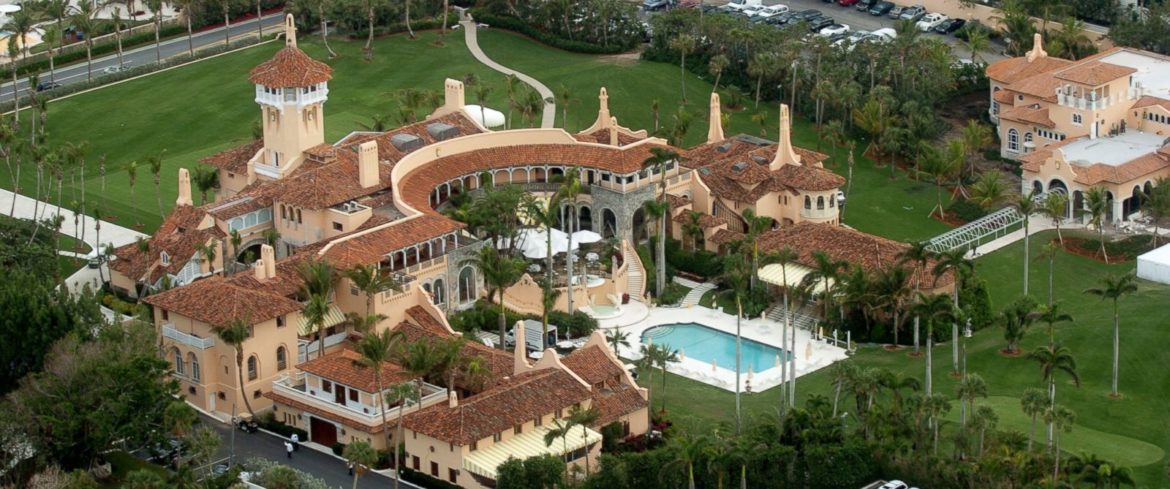The Trump presidency is less than five months old, but has been a quick study at one longstanding D.C. tradition: the Friday-night dump. Administrations often release promised documents once journalists have left the office for the weekend, hoping that any damaging info would get lost in the news cycle turnover. Today, the U.S. Office of Government Ethics has followed suit and released a 98-page document detailing the president’s financial holdings, income and liabilities from the preceding 16 months.
 The filing is not required by law, but has traditionally been released by presidents after assuming office. It is our first real insight into how the president has been disentangling himself from his business interests, and shows how the valuation of the Trump brand has changed. So far, Trump has released three personal financial disclosure statements which collectively cover January 1st, 2014 to April 25th, 2017.
The filing is not required by law, but has traditionally been released by presidents after assuming office. It is our first real insight into how the president has been disentangling himself from his business interests, and shows how the valuation of the Trump brand has changed. So far, Trump has released three personal financial disclosure statements which collectively cover January 1st, 2014 to April 25th, 2017.
The newest form lays out the steps Trump took after November’s victory to shift his assets around to avoid conflicts of interest. In the days leading up to and following the election, Trump dissolved 28 of his business entities and transferred his stake in his remaining companies to his children and a revocable trust from which he continues to draw income. Among the companies dissolved were a number of entities which appear to have been managing Trump’s global business ventures in Saudi Arabia, Qatar, Puerto Rico and Argentina.
Trump also seems to have divested from a majority of his stock holdings. Among the stocks that Trump has sold are his shares of Energy Transfer Partners, the company building the controversial Dakota Access pipeline. ETP, whose CEO Kelcy Warren is a Trump donor, is facing new challenges in court to the pipeline, which the Trump administration approved by executive order shortly after taking office.
Despite having sold off the majority of his stocks, Trump’s trust continues to hold on to at least $1.4 billion worth of other real estate and business assets. In addition to various checking and savings accounts, Trump has between $100,001 and $250,000 invested in gold, and between $1,000,001 and $5,000,000 in a private equity fund called the MidOcean Credit Opportunity Fund, which invests primarily in bank debt.
The form only requires assets held at the end of the reporting period to be disclosed and doesn’t require documentation of any transactions, so we have no way of telling how much income Trump generated by divesting. We do know that Trump reported making at least $597 million during 2016 and the first part of 2017 off the at least $1.4 billion worth of assets that he has retained. For comparison in 2014 and the first part of 2015 Trump made an estimated $429 million off what was then nearly $1.5 billion in assets. Because the law only requires the filer to disclose their income and asset values in ranges, we can’t get a perfectly accurate picture. The top income range is $5,000,000 or more; Trump had nine assets that generated at least that much income.
As for Trump’s income for the last year, the standout is the $37 million he made off the Mar-A-Lago Club, which has also served as a second White House. Over a similar 16 month period covered by Trump’s first financial disclosure (January 2014 to April 2015) the club only brought in $15.5 million. That’s a 139 percent increase in income, part of which may have to do with the doubling of membership fees at Mar-A-Lago earlier this year.
Another one of Trump’s more controversial business ventures, the Old Post Office Building, earned him $19 million during the reporting period. The building is owned by the federal government, and elected officials were specifically excluded from the lease. After much back and forth with Trump’s lawyers, the General Services Administration decided that Trump’s financial rearrangement was sufficient and allowed him to keep his lease on the building, which has been converted into a hotel.
The graph below shows the the breakdown of the monthly income that Trump has listed on his three financial disclosure forms.
Since announcing his run for office in June of 2015, Trump has made at least $1.3 billion off his various business ventures and investments.
